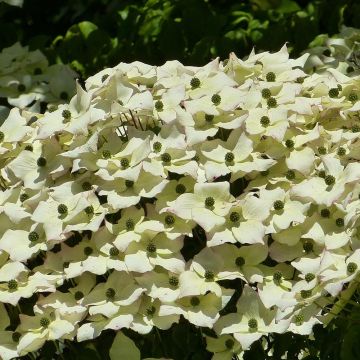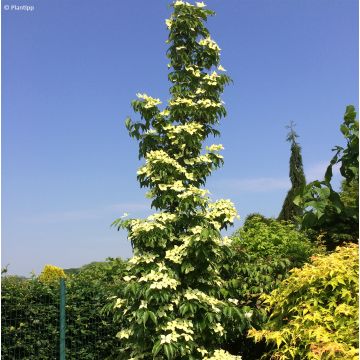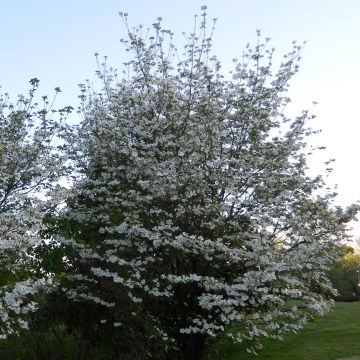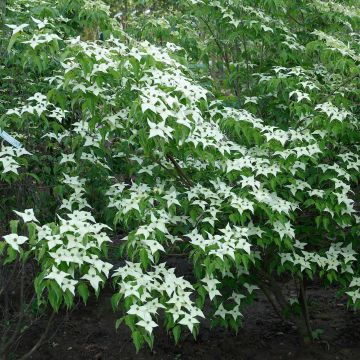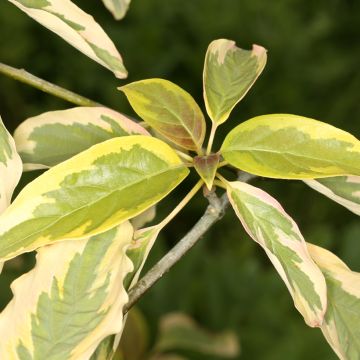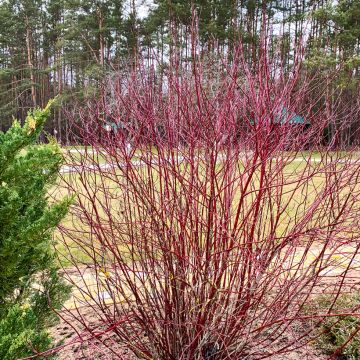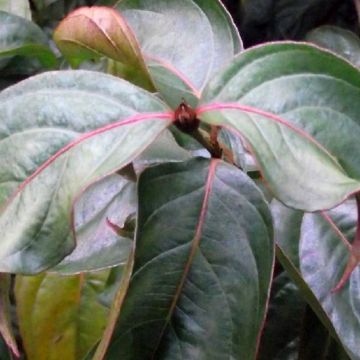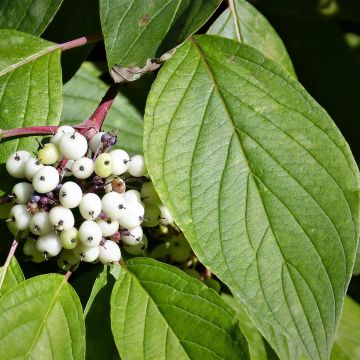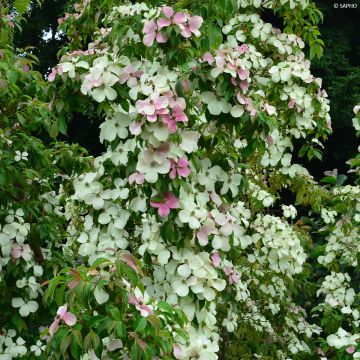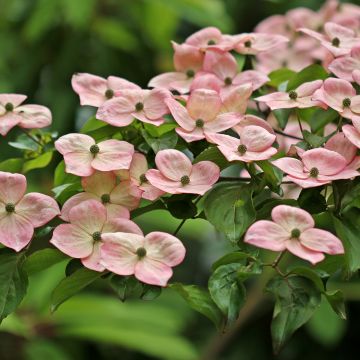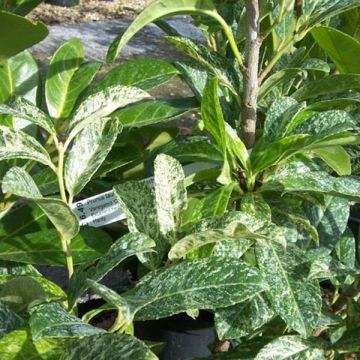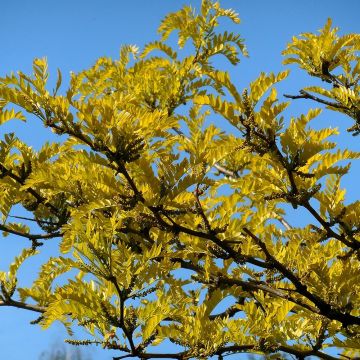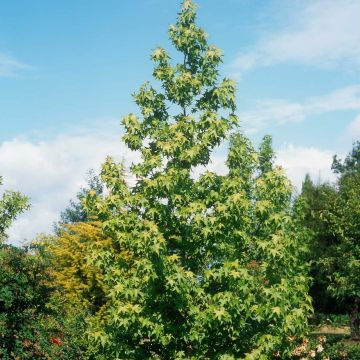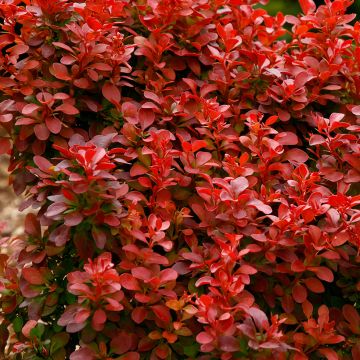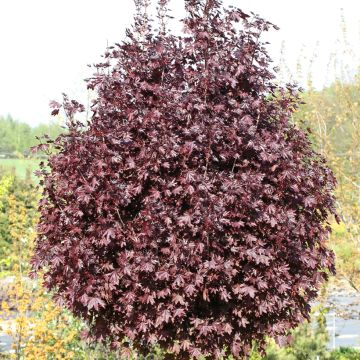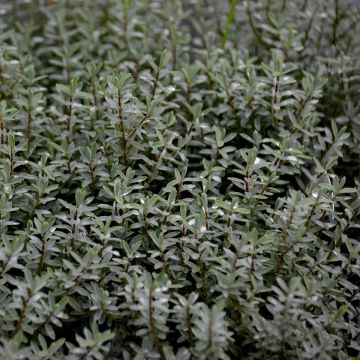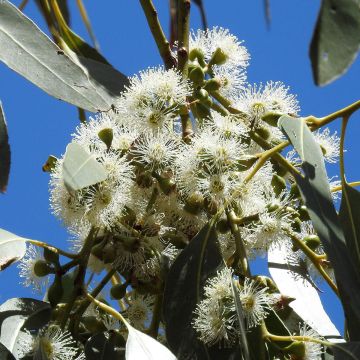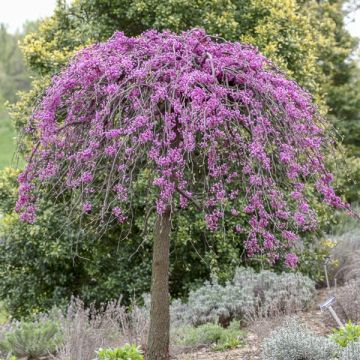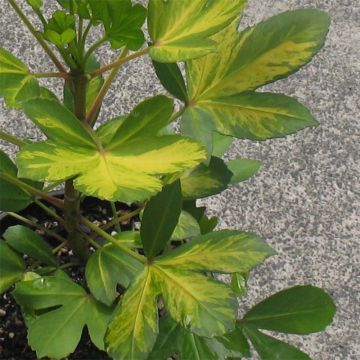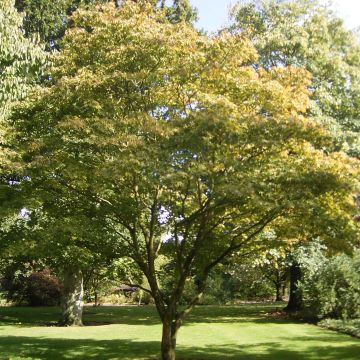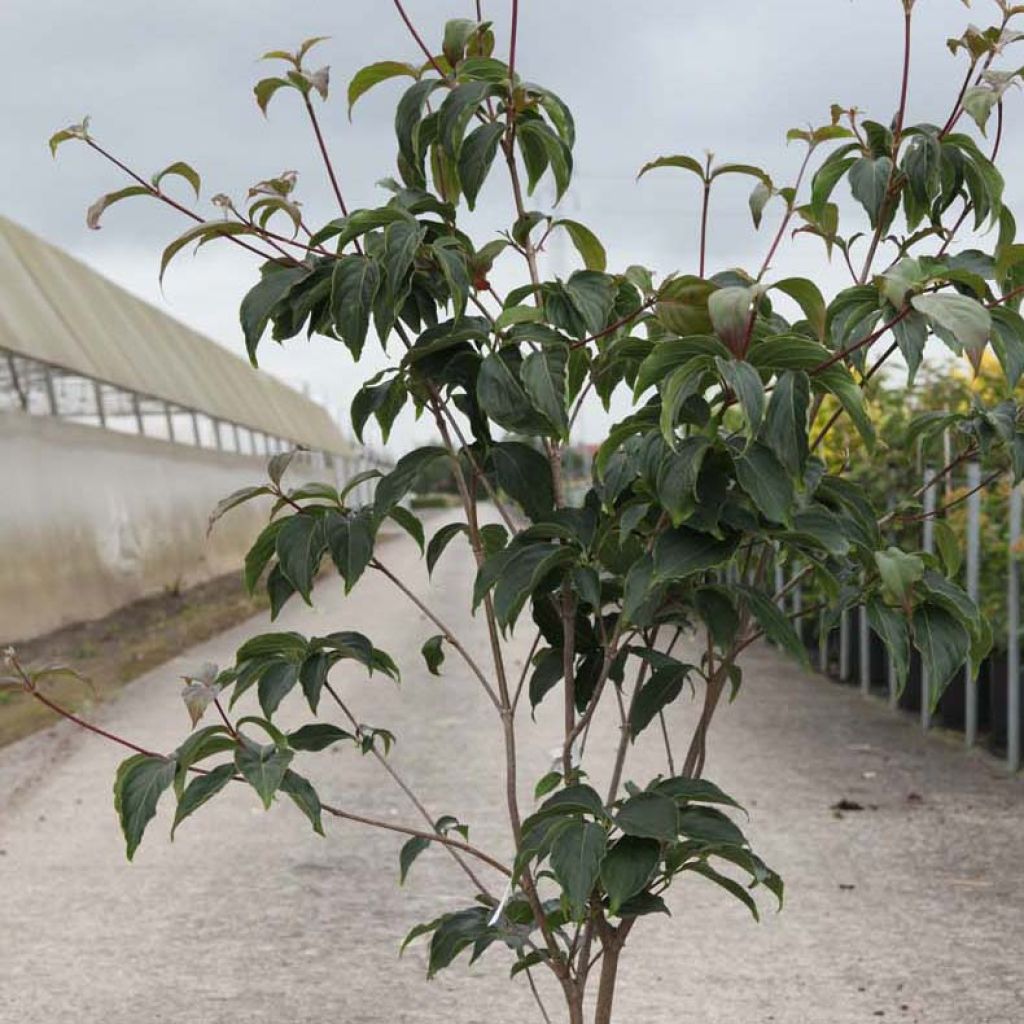

Cornus kousa Copacabana - Flowering Dogwood
Cornus kousa Copacabana - Flowering Dogwood
Cornus kousa Copacabana
Kousa Dogwood, Japanese Dogwood, Chinese Dogwood
This item cannot be shipped to the selected country
Delivery charge from €5.90
More information
Schedule delivery date,
and select date in basket
This plant carries a 24 months recovery warranty
More information
We guarantee the quality of our plants for a full growing cycle, and will replace at our expense any plant that fails to recover under normal climatic and planting conditions.
From €5.90 for pickup delivery and €6.90 for home delivery
Express home delivery from €8.90.
Does this plant fit my garden?
Set up your Plantfit profile →
Description
The 'Copacabana' variety of Cornus kousa is remarkable for the colour of its foliage, which comes in shades of red-purple. This small shrub with a compact and bushy habit offers a beautiful spring flowering, white tinged with pink, which contrasts nicely with the foliage. This recent selection takes its name from the legendary Brazilian beach but has nothing tropical about its hardiness. Indeed, the 'Copacabana' Japanese Dogwood can withstand temperatures below -15 °C (5 °F) and can therefore enhance most of our gardens! Its modest dimensions also allow it to be grown in pots and to brighten up terraces and balconies for the pleasure of city dwellers!
The Kousa Dogwood is a small tree, native to Japan, China, and Korea. Its graphic silhouette, drawn by its layered and horizontal branches as well as its compact and spreading habit, evokes an oriental landscape. Derived from a recent hybridisation, Cornus kousa 'Copacabana' stands out for its bushy habit and slightly creeping appearance. This cultivar remains modest in size, reaching a maximum height of 3 m (9 ft 10 in) with a 2 m (6 ft 7 in) spread at maturity. 'Copacabana' is also remarkable thanks to its highly decorative coppery purple foliage. Light green at first, the leaves turn reddish-bronze to chocolate as they age. The leaves of Cornus kousa are ovate, slightly undulate on the edges. They measure between 5 and 8 cm (2 and 3.1 in) and are arranged opposite each other along the stem. The spectacle intensifies in autumn when Cornus kousa 'Copacabana' turns intense red, like an incandescent bush. The flowering of 'Copacabana' stands out from that of other dogwoods due to its colour. In May-June, the bush is adorned with a multitude of white flowers, tinged with pink on the tips. These are actually green glomerules giving rise to solitary star-shaped inflorescences that are well-shaped and composed of four pointed bracts. The longevity of the flowers enchants the garden for many weeks. Of medium size, these star-shaped inflorescences are arranged on the tree as if placed on the foliage, giving the illusion of a freshly spread snow mantle. In September, flowering dogwoods are covered with small red fruits, resembling strawberries. The higher the summer temperatures, the more generous the fruiting. The fruits are edible and fleshy with a mild flavour, but they are of no real culinary interest. Nevertheless, they provide a certain ornamental value that adds a touch of fantasy to the tree.
The Kousa Dogwood thrives in continental climates and temperate zones. Very cold temperatures during winter can cause absent or reduced flowering. However, this shrub is very hardy and can withstand frosts of at least -15 °C (5 °F). It tolerates sunny exposures in areas with moderately hot summers. In hot regions, it should be planted in a sheltered spot away from the scorching sun. Cornus kousa 'Copacabana' likes fertile, well-drained soils with an acidic tendency. It tolerates clay soils as long as it is protected from excess moisture, especially in winter. Plant it in a deep hole lined with clay balls, coarse sand, or gravel to ensure good drainage. When planting, add compost and heather soil. A pine bark mulch will help maintain soil freshness and acidity. This Cornus is still rare in gardens and yet very easy to grow once it has been properly planted. Pruning is not mandatory but can be done at the end of winter to remove diseased or dead wood and crossing branches to maintain a nice habit. During the first two years after planting, regular watering is necessary in summer. Resistant to diseases and low-maintenance, it knows how to blend in while still standing out!
Cornus kousa 'Copacabana' is a small shrub that will easily find its place in a small space such as a garden, a terrace, or a balcony. It can be grown in pots as long as it is regularly watered during the growing season. In the garden, it will make a strong impression in a bed of heather plants. It can be paired with plants with colourful foliage such as Japanese Maple 'Aureum', Japanese Maple 'Seiryu', or even Pieris 'Flaming silver'. Its bushy and slightly creeping habit allows it to be used as ground cover and brightens up a slightly dark space with its changing and flamboyant colours.
Report an error about the product description
Plant habit
Flowering
Foliage
Botanical data
Cornus
kousa
Copacabana
Cornaceae
Kousa Dogwood, Japanese Dogwood, Chinese Dogwood
Cultivar or hybrid
Other Cornus
Planting and care
Native to Japan, Korea, and China, Cornus kousa thrives in continental climates and temperate zones. Extremely cold temperatures during winter can cause a lack or reduction in flowering. However, this shrub is very hardy and can withstand temperatures as low as -15 °C (5 °F). It tolerates sunny exposures in areas with moderately warm summers. In hot regions, it should be planted in a sheltered spot away from the scorching sun.
Cornus kousa 'Copacabana' prefers fertile, well-drained soil with an acidic tendency. It can tolerate clayey soils as long as it is protected from excess moisture, especially in winter. Plant it in a deep hole lined with clay balls, coarse sand, or gravel to ensure good drainage. When planting, add compost and heath soil. Mulching with pine bark will help maintain soil freshness and acidity. This Cornus is still rare in gardens, yet very easy to grow provided it has been properly planted.
Pruning is not obligatory but can be done at the end of winter to remove diseased or dead wood and crossing branches in order to maintain an attractive habit. During the first two years after planting, regular watering is necessary in summer.
Resistant to diseases and low-maintenance, it knows how to blend in while still standing out!
Planting period
Intended location
Care
This item has not been reviewed yet - be the first to leave a review about it.
Striking foliage shrubs
Haven't found what you were looking for?
Hardiness is the lowest winter temperature a plant can endure without suffering serious damage or even dying. However, hardiness is affected by location (a sheltered area, such as a patio), protection (winter cover) and soil type (hardiness is improved by well-drained soil).

Photo Sharing Terms & Conditions
In order to encourage gardeners to interact and share their experiences, Promesse de fleurs offers various media enabling content to be uploaded onto its Site - in particular via the ‘Photo sharing’ module.
The User agrees to refrain from:
- Posting any content that is illegal, prejudicial, insulting, racist, inciteful to hatred, revisionist, contrary to public decency, that infringes on privacy or on the privacy rights of third parties, in particular the publicity rights of persons and goods, intellectual property rights, or the right to privacy.
- Submitting content on behalf of a third party;
- Impersonate the identity of a third party and/or publish any personal information about a third party;
In general, the User undertakes to refrain from any unethical behaviour.
All Content (in particular text, comments, files, images, photos, videos, creative works, etc.), which may be subject to property or intellectual property rights, image or other private rights, shall remain the property of the User, subject to the limited rights granted by the terms of the licence granted by Promesse de fleurs as stated below. Users are at liberty to publish or not to publish such Content on the Site, notably via the ‘Photo Sharing’ facility, and accept that this Content shall be made public and freely accessible, notably on the Internet.
Users further acknowledge, undertake to have ,and guarantee that they hold all necessary rights and permissions to publish such material on the Site, in particular with regard to the legislation in force pertaining to any privacy, property, intellectual property, image, or contractual rights, or rights of any other nature. By publishing such Content on the Site, Users acknowledge accepting full liability as publishers of the Content within the meaning of the law, and grant Promesse de fleurs, free of charge, an inclusive, worldwide licence for the said Content for the entire duration of its publication, including all reproduction, representation, up/downloading, displaying, performing, transmission, and storage rights.
Users also grant permission for their name to be linked to the Content and accept that this link may not always be made available.
By engaging in posting material, Users consent to their Content becoming automatically accessible on the Internet, in particular on other sites and/or blogs and/or web pages of the Promesse de fleurs site, including in particular social pages and the Promesse de fleurs catalogue.
Users may secure the removal of entrusted content free of charge by issuing a simple request via our contact form.
The flowering period indicated on our website applies to countries and regions located in USDA zone 8 (France, the United Kingdom, Ireland, the Netherlands, etc.)
It will vary according to where you live:
- In zones 9 to 10 (Italy, Spain, Greece, etc.), flowering will occur about 2 to 4 weeks earlier.
- In zones 6 to 7 (Germany, Poland, Slovenia, and lower mountainous regions), flowering will be delayed by 2 to 3 weeks.
- In zone 5 (Central Europe, Scandinavia), blooming will be delayed by 3 to 5 weeks.
In temperate climates, pruning of spring-flowering shrubs (forsythia, spireas, etc.) should be done just after flowering.
Pruning of summer-flowering shrubs (Indian Lilac, Perovskia, etc.) can be done in winter or spring.
In cold regions as well as with frost-sensitive plants, avoid pruning too early when severe frosts may still occur.
The planting period indicated on our website applies to countries and regions located in USDA zone 8 (France, United Kingdom, Ireland, Netherlands).
It will vary according to where you live:
- In Mediterranean zones (Marseille, Madrid, Milan, etc.), autumn and winter are the best planting periods.
- In continental zones (Strasbourg, Munich, Vienna, etc.), delay planting by 2 to 3 weeks in spring and bring it forward by 2 to 4 weeks in autumn.
- In mountainous regions (the Alps, Pyrenees, Carpathians, etc.), it is best to plant in late spring (May-June) or late summer (August-September).
The harvesting period indicated on our website applies to countries and regions in USDA zone 8 (France, England, Ireland, the Netherlands).
In colder areas (Scandinavia, Poland, Austria...) fruit and vegetable harvests are likely to be delayed by 3-4 weeks.
In warmer areas (Italy, Spain, Greece, etc.), harvesting will probably take place earlier, depending on weather conditions.
The sowing periods indicated on our website apply to countries and regions within USDA Zone 8 (France, UK, Ireland, Netherlands).
In colder areas (Scandinavia, Poland, Austria...), delay any outdoor sowing by 3-4 weeks, or sow under glass.
In warmer climes (Italy, Spain, Greece, etc.), bring outdoor sowing forward by a few weeks.

































